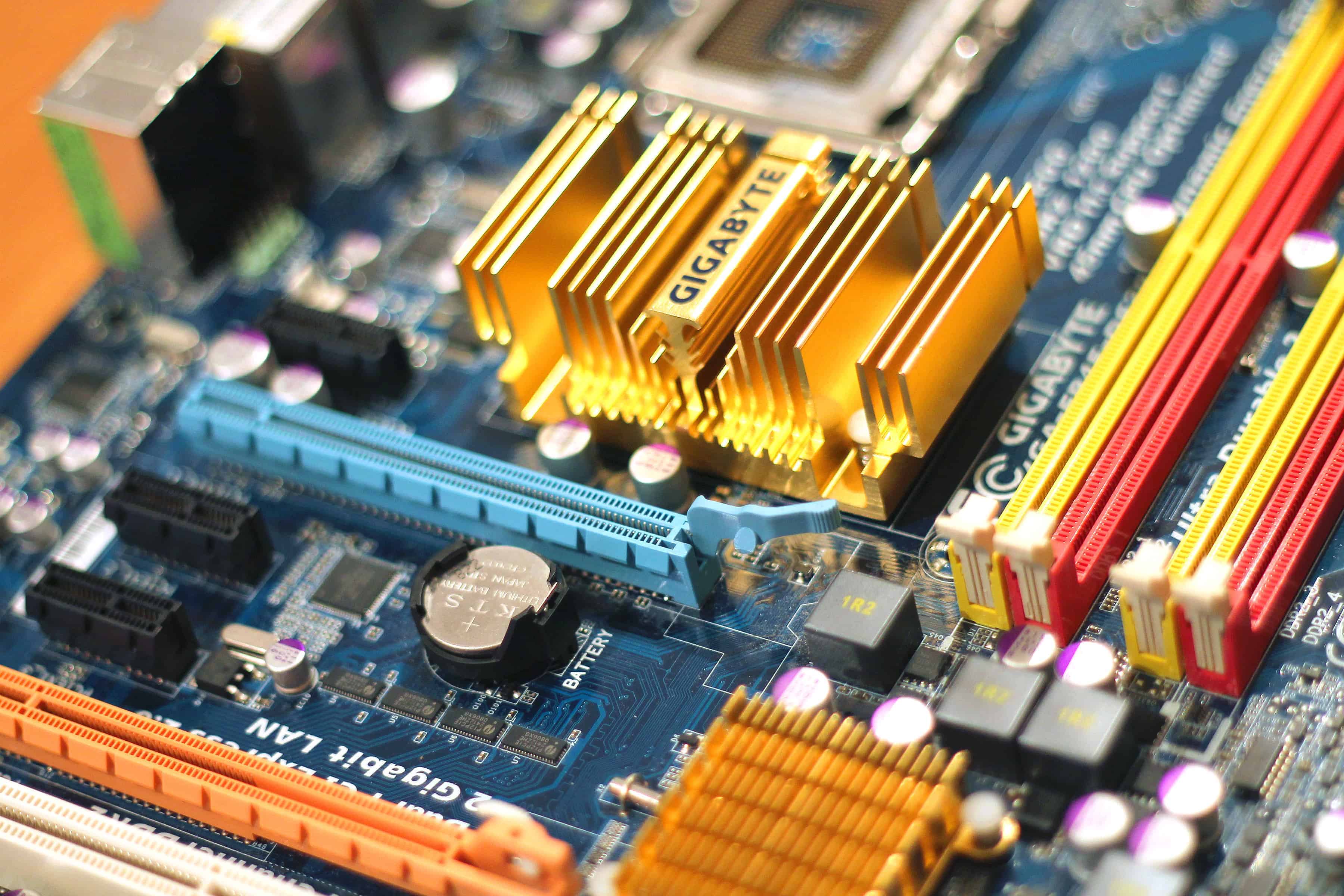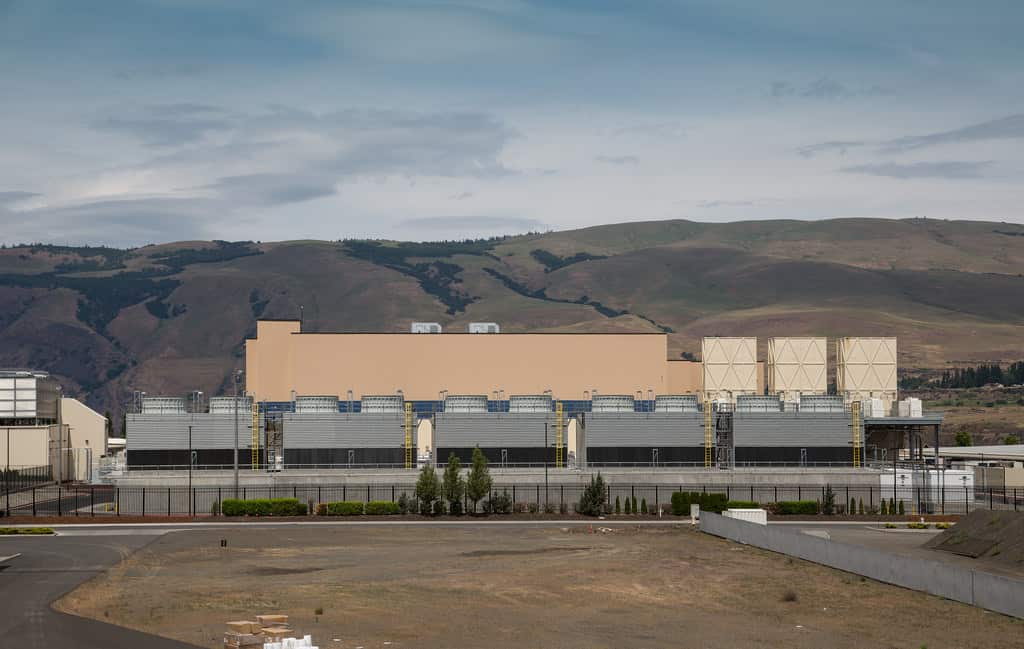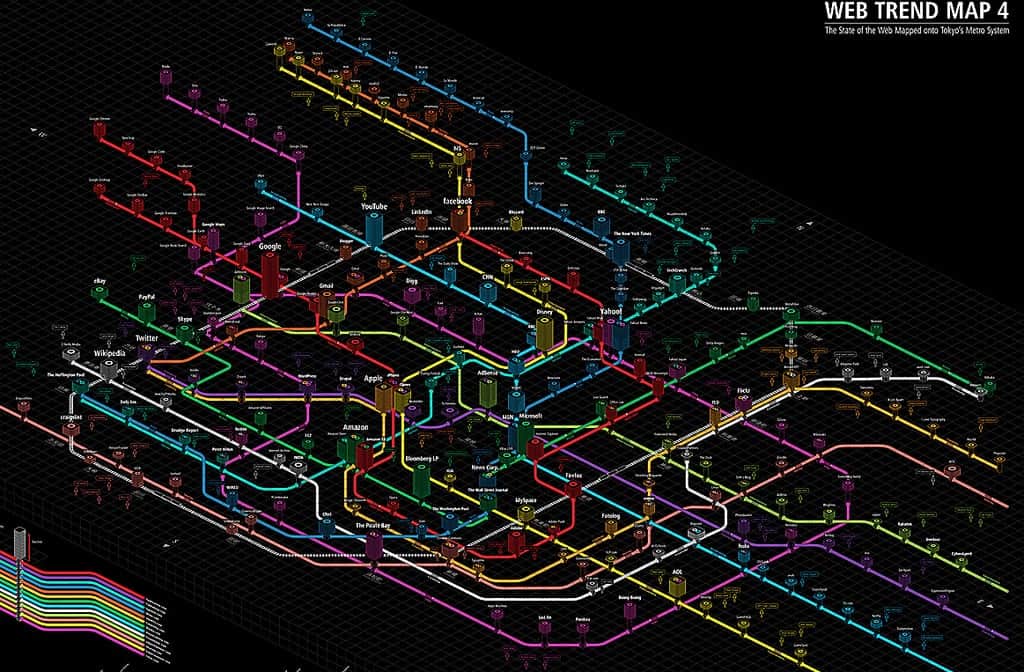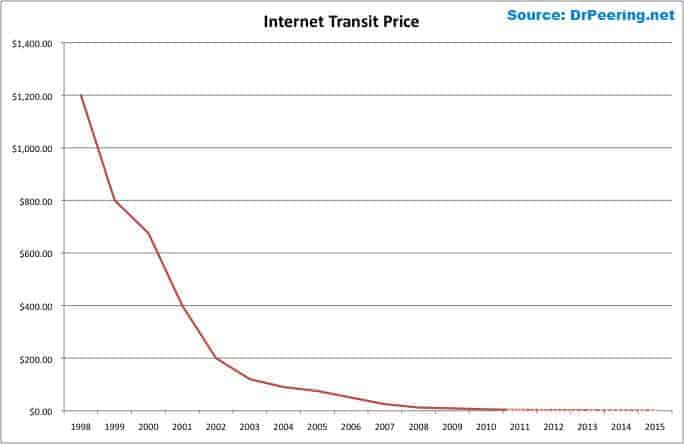For consumers in the US, broadband data can be surprisingly expensive.
Since the introduction of data caps, Internet subscribers have been frustrated by overage fees ranging anywhere from $0.20–$12 per gigabyte in key broadband markets like Dallas, New York, and Phoenix. The seemingly arbitrary fees are particularly frustrating since it’s unclear how much it actually costs an ISP to deliver that gigabyte.
Share with your friends
One thing’s for certain — it costs a lot less than the $0.20/GB fee charged by major ISPs like Comcast and AT&T. But how much does it actually cost the ISP to deliver 1GB to a customer?
Calculations based on Internet transit costs, as detailed below, suggest an ISP cost per gigabyte measured in fractions of a penny. Using the $10/50GB overage fee quickly becoming standard for broadband caps as a reference, that would translate to a comically large markup. Are ISPs pulling in those comical margins? Not necessarily, because that “fractions of a penny” cost comes before you consider the huge overhead that goes into maintaining Internet infrastructure.
Given that the cost of a generic Internet connection in US metro areas costs consumers almost twice as much as the same plan in other first-world cities like London or Paris , consumers are right to be suspicious about the pricing.
On the other hand, there’s no denying that the cost of implementing and maintaining Internet infrastructure is nothing to scoff at, with the cost of laying fiber as high as $80,000 per mile.
In this post we’ll unpack the question of how much data costs the ISP and present you with information that places the price in context.
Visualizing a gigabyte
Just to be clear, when we talk about the cost of one gigabyte we’re talking about amount of data, not the speed of delivery. (Example: cost of transferring 1GB file vs. speed of 1MB/second.) Regardless of how fast data is delivered, data caps are set in terms of amount of data transferred.

The amount of data stored in a gigabyte can be visualized as roughly equivalent to a single feature-length standard-definition film. On a standard DSL broadband connection, downloading one gigabyte of data would take around 15–25 minutes. (At $0.20–$10.00/GB overage rates, you can see how this would add up fast if you don’t watch your cap — particularly with data-guzzling technologies like 4K video streaming entering the market.)
Factors that determine cost
The costs that make running a major ISP expensive are mostly clear to the average customer: technical support staffing, infrastructure upkeep, expansion, etc. The cost that’s most mysterious to consumers is the question of how much it costs re:electricity to transmit data — which is essentially asking, “how much does it cost to keep the lights on?”

The Internet as a whole requires far more electricity than you probably imagine. Google’s cloud alone used 260 million watts in 2011, more than Salt Lake City in the same period . A smartphone streaming an hour of video on a daily basis uses as much electricity as a new refrigerator .
That said, the distance between ISP and consumer is relatively short in the context of a worldwide network. (That’s why it’s called the “last mile,” and ISPs like Comcast are referred to as “last mile providers.”) While most reports place the estimated cost of moving data over existing infrastructure at less than a penny per gigabyte, the patchworked nature of Internet infrastructure makes exact measurements surprisingly tricky.

For starters, there are three separate stages data travels through when a customer consumes data:
- The “last mile” between customer’s residence and ISP office
- The Internal Network between the ISP and public Internet “backbone”
- The public Internet “backbone” network
This is a simplistic representation of what a data packet’s hops across networks will actually look like in practice, but gives a general idea of what we’re looking at.
Unfortunately, the pricing data needed to pin down the per-gigabyte cost of data transit to ISPs in the “last mile” isn’t available directly. ISPs are required to file their expenses like any other company, but they’re notoriously private with their records. Even the public records that are available are usually redacted to conceal exact figures.
Falling transit prices point to marginal per-gigabyte costs
Even if ISPs weren’t secretive about their operational costs, the varying distances and delivery types (cable, DSL, fiber, etc.) combined with traffic-sharing arrangements like peering make determining exact cost virtually impossible.
We can, however, make educated estimates based on the cost of public Internet transit prices. Again, transit prices are protected by NDAs, meaning that public data is based on individual statements from Internet Operations Forums. Even if the prices aren’t accurate to the penny, it’s clear that prices have dropped a dramatic 15–50% year over year .

Cost projections for the public “Internet backbone” section of that outline above, based on the 2015 $0.63/gbps transit price estimate, land well below a penny per gigabyte. Last mile costs are likely similar, although it’s difficult to ballpark it since there are so many different types of infrastructure in the last mile, from twisted copper telephone lines (DSL) to coaxial cable (Cable). It’s arguable that the patchwork, innovative nature of US broadband infrastructure is largely to blame for the current cost increases compared to smaller, more recently implemented last-mile networks in places commonly referenced as comparisons, such as Paris or Seoul.
So, even if we can’t get an exact price, it’s clear that costs have been falling into the pennies range for years… but that’s essentially just for electricity costs, and doesn’t include upkeep, installation, staffing, or any of the other factors important for the “last mile” — which also doesn’t use the same data-friendly fiber cabling as the backbone.
Want to know more about American internet?
- View every internet service provider in the U.S, that employs data caps.
- View specific pricing and speed details on every internet service provider in America, including Xfinity, CenturyLink, and Viasat.
- Check out in depth broadband statistics for every city in the county, including analysis on internet access in Phoenix, San Antonio, Portland, and Salt Lake City.
ISP shareholder statements
Exact numbers on ISP data transit costs may be hard to pin down, but the most compelling piece of evidence against the need for data caps comes from ISPs themselves. Specifically, smaller Internet companies like Sonic and WOW! who continue to compete on price and customer service — even without the extra revenue of data caps or economies of scale that larger ISPs like Comcast and AT&T.
For example, Sonic CEO Dane Jasper stated to CIO that “[t]he cost of increasing [broadband] capacity has declined much faster than the increase in data traffic.”

While Sonic’s position as an underdog might shed some suspicion on the statement, Jasper provided concrete cost and revenue comparisons to back up his accusation. While infrastructure costs were as high as 20 percent of revenue when the company started up, the number has since dropped to less than two percent, says Dane.
Even ISPs who support data caps have gone on record admitting that caps have little to do with data transit costs or infrastructure management. Here’s SuddenLink CEO Jerry Kent in a 2015 conference call to investors:
I think one of the things people don’t realize [relates to] the question of capital intensity and having to keep spending to keep up with capacity. Those days are basically over, and you are seeing significant free cash flow generated from the cable operators as our capital expenditures continue to come down.
If data caps were truly a response to the cost of data, infrastructure, and “congestion,” it stands to reason that all ISPs would follow suit and charge consumers by the gigabyte for exceeding their caps. So long as smaller ISPs refuse to follow suit, it will be difficult for major players like Comcast to justify data-consumption-based overage fees.
Big picture: costs going down
Reports filed over the past decade of Internet history have one common theme: a rapid decline in cost .
From the consumers’ perspective, the cost of data transfer matters much less than the simple fact that the price has been steadily moving down since the 90s . Worldwide, data transit costs went down 22% in 2015 and an average 14% compounded annually in the three years prior . Meanwhile, the cost of US Internet connections has only risen , which leads to the question: where is the money going?
Theoretically, it’s going towards infrastructure upgrades that would boost speed and efficiency, bringing prices down for consumers in the long run. In practice, the struggle between the FCC and major ISPs to facilitate the deployment of next-generation technologies like fiber-optics has been slow-moving in spite of incentives like tax breaks and subsidies .
Cost in context
Regardless of how cheap it is for an ISP to transfer a gigabyte of data, the fact that it’s so cheap actually diminishes its importance in the debate over connection costs, data caps and overage fees.
Share with your friends
With the cost of data so low as to be negligible, the real factor for ISPs is more substantial operating costs like infrastructure upgrades, technician payroll, network engineers, call centers, and every other moving part in the “last mile” Internet business.

ISPs have an obligation to their shareholders to charge reasonable rates that turn a profit. However, the evidence is stacked against the ISP’s claim that data caps and per-gigabyte overage fees are necessary to maintain infrastructure. When costs are so low, capping consumers rather than upgrading infrastructure to account for increased traffic looks highly suspicious — especially in an uncompetitive market.
Ultimately, the only way to ensure that the ISPs maintain reasonable profit margins is to foster a competitive marketplace that lets the “invisible hand” bring the consumer price closer to the ISP cost.

